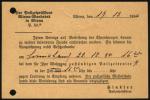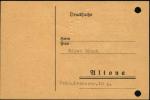-
Posts
949 -
Joined
-
Last visited
Content Type
Profiles
Forums
Blogs
Gallery
Events
Store
Everything posted by David Gregory
-

Heer Kursk Volumes 1-6
David Gregory replied to Johnny's topic in Germany: Third Reich: Wehrmacht Medals, Decorations & Awards
Johnny, You might try the Stone & Stone entry for Friederich Husemann (note the correct spelling of his first name for more successful Google results, etc.). As far as I am aware, the full history is available in German, but I can only find references to the first volume in English. David -

Imperial Russia Neat Imperial Russian - White Russian Group
David Gregory replied to NavyFCO's topic in Russia: Imperial
What a superb group! You are very lucky to find a seller who believes that a group should not be split up and that a collector will appreciate and keep it together. What are uniforms shown in the portraits and how do they differ from other uniforms of the era if they are from the White army? -
Rick, According to the 1941 Berlin phone book, Amtsrat Heinrich Drews was living at Wetzlarerstrasse 6 in Berlin-Wilmersdorf in 1941, but nothing more is shown in his personal entry besides his phone number. The entries for the various ministries, including the Staatsministerium, only provide the numbers of the various offices and departments without any indication of the people involved. The few Staatsministerium numbers are only for the main office switchboard at Leipziger Str. 3, numbers for night-time calls and the caretaker (janitor on your side of the pond) and the Archivabteiung at Dorotheenstr. 21. Some ministry and military "bigwigs" had more elaborate entries under their own names showing their office addresses and numbers, but Amtsrat Drews seems to have been either too modest or frugal to pay for the extra line in the phone book. David
-
Kev, Though not impossible, that combination could probably only have been properly acquired by a member of a J?ger unit or someone who was frequently transferred, or in and out of units like there was no tomorrow. Since there seems to be zero provenance for the item, I would venture to say that those clasps might just have been added to a spare Kyffh?user medal. Heiko will be able to tell you if the clasps are good or not. David
-
Jaques, Ships' menus seem to be collectible items in their own right. The connection to your partuclar collecting field makes this one even better. Do you have any more? David
-
Good topic - Honour Cross documents are probably one of the least considered items of militaria related to WW1 service. It would seem that not every former soldier was sent his Honour Cross. The note below sent to Edgar B?sch, a former Gefreiter with 7. Kompagnie/Infanterie-Regiment Nr. 32 and recipient of the Schwarzburg Silver Medal for Merit in War, informed him that that he could collect his Honour Cross and certificate from his local police station on presentation of the notification. I do not know if he bothered to pick it up, as neither the award document or the cross were with the few papers of his that I now have. [attachmentid=30681] [attachmentid=30682] It would seem that he was also offered the deluxe case for the cross at some time: [attachmentid=30683]
-
Very nice - I always assumed that this style with the crossed acnons on both sides was simply an older version of the award. Do you know if it is possible to differentiate between medals manufactured in different periods, e.g. pre-WW1 awards, awards for WW1, awards for WW2, etc.?
-
Rick, These two images are shown in volume 1 of Das Ehrenbuch der Deutschen Schweren Artillerie. The text suggests that this type entered front-line service some time in 1916. They only had a limited traverse of a few degrees, which meant that they required curved sections of track to aim at targets not in line with the main railway track. These purpose-built curved sections were easily detected from the air and received special attention from Allied artillery to destroy them. The guns were ready to fire within 10 minutes and could be fired on any normal railway track. Long-range fire with full charges was usually only possible on reinforced lines. 24-cm-Eisenbahnkanone L/40 of Batterie 1001 in firing position, Champagne 1917: [attachmentid=30526] From the end of 1917, turntable arrangements were developed to allow targets to be engaged more easily. 24-cm-Eisenbahn-Bettungskanone L/40 on a turntable bed in Guise, September 1918: [attachmentid=30527] I haven't found any reference to them in Cron, so I can only assume that the crews were made up of army artillery units, as the images suggest. I recently acquired a Milit?rpass to a man who served with Fussartillerie-Regiment Nr. 3 from 1912 and was assigned to Marine-Kanonenbatterie Nr. 3 and Fussartilerie-Batterie 722 during the war. These units were equipped with heavy naval guns and siege howitzers with a calibre of 30.5 cm and he was involved in sieges at Nancy, Antwerp, Dixmuiden, Przemyzl, Nowo Georgiewsk and D?naburg. The guns used by naval artillery units were crewed by sailors. David
-
Andy, That MG gunner is a lot better than any attempts I remember making. Mark, Your 28 mm figures are better than many large-scale figures I have seen! Please show any other WW1 figures and/or guns and AFVs if you have them. Thanks in advance, David
-
I agree with Rick. The few hundred Milit?rp?sse I have show that men could be discharged from service by any number of units, although the Ersatz or depot unit that they first served with was often the last unit to which they were attached in many cases. The issue is complicated by men who originally joined units that no longer existed at the war's end and those returning from captivity, who were usually processed by an Abwicklungs- or Heimkehrerstelle or transit camp (DULAG/Durchgangslager). It would still be worth checking any Garde du Corps history, since the bestowal of an award held in such high esteem will almost certainly find mention, particularly as the unit would have an interest in being associated with the exploits of one of its former members.
-

Why I'm skint
David Gregory replied to Tony's topic in Great Britain: Orders, Gallantry, Campaign Medals
Tony, Great stuff. I also find it hard to resist research opportunities (much to the detriment of my wallet). Look forward to some of the research results and possibly a visit or two to the places where those guys saw action. David -
A (his) profession is given as gardner in post #1 The entry on the left in post #2 indicates he had superficial injury near an old operation scar on his left cheek. The entry on the right might belong to it, in which case the injury was caused by an artillery shell or splinter. The entry top right in post #3 also refers to a profession, coachman, which may be the Soldbuch holder's profession or that of his father. The entry in post #6 indicates he had convalescent leave (Genesungsurlaub). David
-
Tom, Yes, I think so. It still makes a lovely purse to protect the outside of a fragile egg grenade. I imagine there are quite a few munitions collectors who would cheerfully donate a part of their anatomy to obtain something like that which will only have survived by being stored very carefully. David
-
I do my homework about prices for standard items in much the same way. However, I have never gone to the effort of making a website for them, but just keep relevant auctions saved on my PC for reference when they vanish after 90 days. It is interesting to see how average eBay prices compare with those of most dealers.







